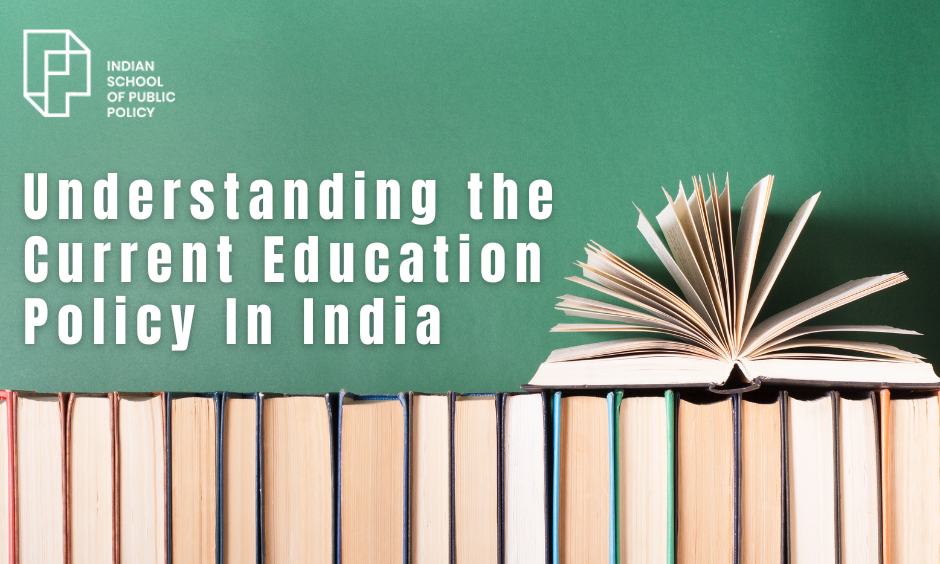Table of Contents
Understanding The New Education Policy In India

Imagine a future where every Indian child can ideate, implement, and innovate instead of just memorising the same old facts. With over 250 million students in school education from primary to higher secondary, India embarked on ambitious reforms in education in 2020. Chaired by Dr. K. Kasturirangan, former chairman of ISRO, the committee that led to the drafting of the New Education Policy was formed.
What is the New Education Policy?
The government of India introduced a comprehensive reform report on education in 2020. The new reforms in the education sector focus on critical thinking, creativity, and problem-solving. The policy also stresses the need to build strong foundational skills. The New Education Policy, therefore, envisions a flexible, multidisciplinary approach with an emphasis on foundational literacy.
Why New Education Policy for India
A New Education Policy was required because the old curriculum based on the 1986 rules had become rigid and old-fashioned. The exam focused on rote learning of books, which led to memorisation of concepts rather than real application in the world. Some of the key shortcomings of the older policy were,
- Skills gap: The students entered the workforce with very limited technical skills, reducing their employability.
- Global competition: The students from other countries are competitively advanced with holistic learning curriculum, absent in India.
- Decreased learning levels: Declining reading and learning levels, as highlighted by the Annual Status of Education Report (ASER 2018), prompted reforms in the system.
New Features in the Education Policy
NEP introduces multidisciplinary studies with competency-based assessments. Key features of NEP guidelines are as follows:
- Early childhood care and education: The focus is on foundational learning with play and activity-based learning in childhood.
- Multilingual instruction: In the early years of childhood, the instruction is in the mother tongue/local language.
- Foundational literacy: Ensuring numeracy by grade 3 for all students leads to establishing foundational literacy.
- Ensuring universal access: Setting targets of 100% enrolment in education at all levels from preschool to secondary education.
- School curriculum: The new 5+3+3+4 facilitates the introduction of new subjects and skills.
- Transforming the regulatory system: Creation of a single regulator for higher education and all the multidisciplinary universities and colleges.
- Adult education and lifelong learning: Focus on students’ lifelong education with online and community courses and programmes.
Implementation Constraints of Education Policy
Indian educational diversity, which is based on language, culture, and communities, is a strength. The same diversity, however, is also responsible for creating constraints, like maintaining uniform standards across the nation. Some of the main constraints are:
- Technological divide: Unequal access to computers and the internet for rural area students.
- Teacher capacity: It remains a challenge with a shortage of trained and qualified teachers.
- Data and evaluation: The National Achievement Survey (NAS) and ASER reports have coverage limitations on the evaluation of enrolment data for students.
- Investment constraints: Although investment in the educator sector is increasing. But India is yet to achieve the NEP-proposed 6% of GDP in total education expenditure.
- Center-state coordination: The state autonomy of education institutions and resources with central guidelines remains a challenge.
NEP sets an ambitious target of changing the education framework; its implementation requires sustained capacity building. In this regard, over 2020-25 there have been developments over the years that have advanced its objectives.
Developments in New Education Policy (2020-2025)
Some of the developments over the years in the New Education Policy are as follows:
- Right to Education Amendment Act 2024
Aligned with NEP 2020, the Ministry of Education in 2024 amended and reinforced that no students in Grades 5-8 of school shall be expelled from school until the completion of elementary education.
- National Student Assessment reforms
The launch of the PARAKH-Rashtriya Sarvekshan Dissemination Portal in 2025 marked a key step in realising NEP. It provides open access to national and state-level data on student performance.
- Digital and learning expansion
The government launched the One Nation One Subscription (ONOS) initiative, which gives access to 13,000 e-journals, fostering a robust research culture in higher education.
- Capacity building and teacher training
The Malaviya Mission Teacher Training Programme (MMTTP) has trained over 2.5 lakh faculty members, focusing on areas like AI, cybersecurity, and entrepreneurship.
- Data and Governance
For the first time in any academic year since the beginning of UDISE+, the total number of teachers has crossed the 1 crore mark in 2024–25, balancing the teacher and student ratio in the country.
Role of public policy in education
Public policy serves as a bridge between societal needs and administrative priorities, and in the context of the implementation of the NEP 2020 vision, policymaking and execution play important roles, which can also demonstrate measurable progress.
The monitoring of initiatives ensures outcomes are achieved. Initiatives like PM e-VIDYA deliver lessons with the help of TV, radio, and online resources and expand learning for students across rural and urban regions. Similarly, UDISE+ and PARAKH help policymakers on school performance, teacher deployment, and student enrolment.



